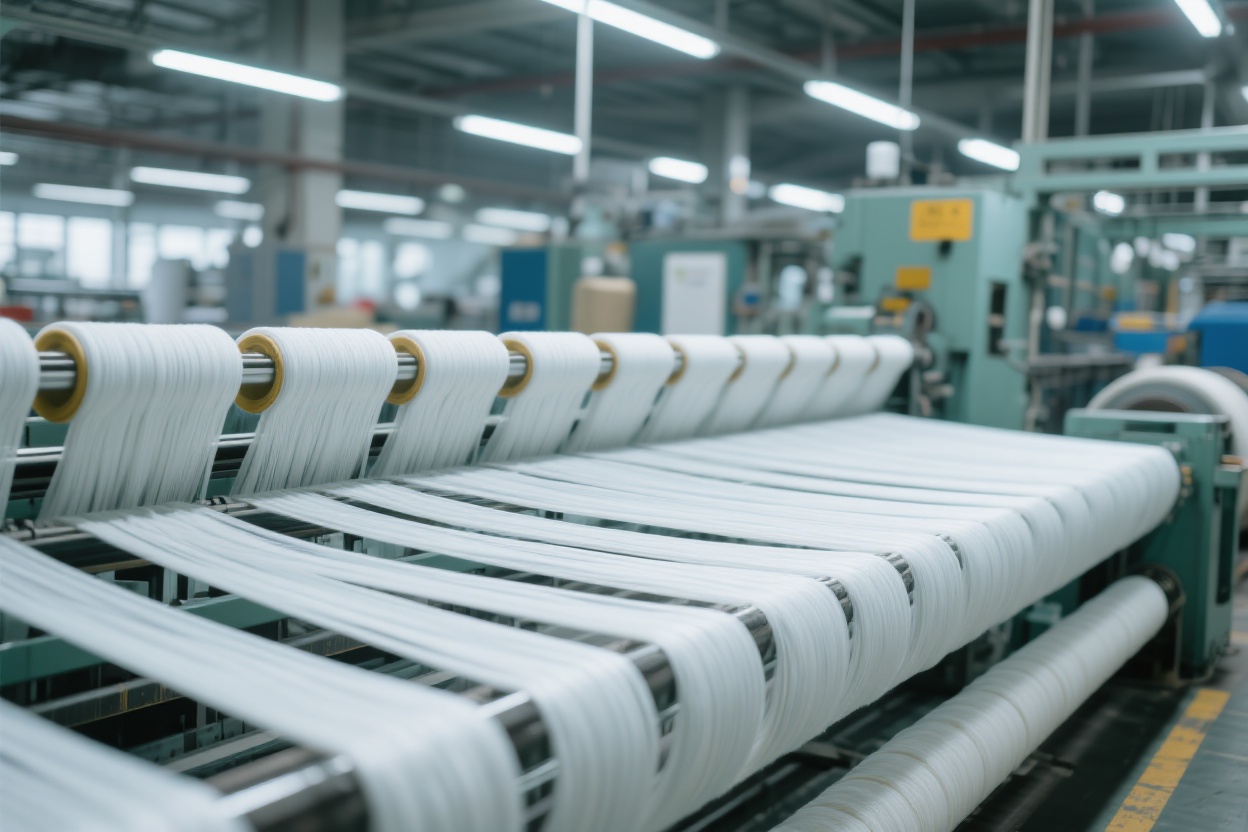Antai Textile: 30 Years of Craftsmanship Persistence, Responding to Changes with Stability to Weave a Resilient Future for the Acrylic Fiber Industry

In July, the summer heat is intensifying in Zhangjiagang, yet the production workshop of Antai Textile is bustling with orderly activity—crimson acrylic sliver flows along the automated production line, and after drafting and twisting, it quickly turns into rolls of fluffy and soft acrylic yarn. In the neighboring fancy yarn workshop, slub yarn and loop yarn display dynamic textures under the control of precision instruments. These orders, soon to be shipped to Zhejiang and Guangdong, are carrying Antai Textile's over 30 years of textile craftsmanship to the production lines of downstream clothing brands.
"Manager Li, I just received the latest data from the Raw Materials Department. Jilin Petrochemical's 260,000-ton acrylonitrile unit will be put into production at the end of the month. We can finalize the long-term order price we discussed earlier." Factory Director Huang from the Production Department walked into the Marketing Department office holding a report, with a thin layer of sweat on his forehead from just inspecting the workshop. Li Xiong, the Marketing Department Manager, was contemplating the acrylonitrile market weekly report on his computer screen. Upon hearing this, he looked up and smiled: "I was just looking at the maintenance news from Shandong Haijiang. Their 130,000-ton unit will be shut down from the 7th to the 17th, so short-term supply is a bit tight. But once Jilin Petrochemical's new capacity comes online, raw material supply in the third quarter should be stable."
Behind this conversation lies Antai Textile's market acumen as a deep-rooted player in the acrylic fiber field. Since establishing roots in Zhangjiagang in 1993, this enterprise, which mainly engages in acrylic yarn, acrylic sliver, colored acrylic sliver, and fancy yarn, has long been accustomed to finding certainty amid fluctuations in the raw material market. The recent subtle changes in the acrylonitrile market are exactly a footnote to their ability to 'respond to changes with stability'—as of July 10, the capacity utilization rate of China's acrylonitrile industry has slightly risen to 76.20%, with a weekly output of 83,100 tons; while a week ago, Lihuayi's spot quotation was just reduced by 50 yuan/ton to 7,900 yuan/ton ex-factory. "Upstream prices are like a pendulum; we need to be the ones to stabilize it," Li Xiong explained, pointing to the 'three-color early warning mechanism' chart on his desk. "Red corresponds to a surge in raw material prices, triggering the inventory emergency plan; green indicates a period of loose supply, taking the opportunity to lock in long-term orders to reduce costs; the current 'green with yellow' transition period is exactly the window for us to adjust our product structure."
This confidence in 'responding to changes with adaptability' stems from Antai Textile's in-depth control over the industrial chain. Led by Factory Director Huang, the reporter entered the 200-mu production base: in the workshop, the HSR high-speed drawing frame imported from Germany is combing the snow-white acrylic sliver into uniform and fine strands. "This is the equipment we upgraded last year, which controls the unevenness rate of acrylic sliver within 1.5%, 0.3 percentage points lower than the industry average," Factory Director Huang patted the machine shell. "Downstream customers using our acrylic sliver to spin high-count yarn can reduce the breakage rate by 20%—that's the value of technology." More eye-catching is the neighboring color spinning workshop, where dozens of colors of acrylic sliver are mixed in closed pipelines, eventually turning into soft Morandi color series yarn "Traditional acrylic yarn requires post-dyeing; now customers prefer 'ready-to-use' colored acrylic sliver. Our color fastness can reach level 4 or above, half a level higher than the national standard," Li Xiong added. This 'one-stop color spinning solution' is becoming Antai's flagship product, with sales volume increasing by 15% year-on-year in the first half of this year, especially favored by fast fashion brands.
In the face of possible 'two-way fluctuations' in acrylic fiber prices recently due to factors such as crude oil volatility and tariff negotiations, Antai Textile has already laid down a 'buffer pad'. "Our intelligent warehousing system can monitor raw material inventory in real-time. With the current industry inventory level of 45,800 tons, our acrylonitrile reserve is maintained above the 30-day safety line, ensuring neither supply interruption due to short-term maintenance nor blind stockpiling that occupies funds," Factory Director Huang opened the production management APP on his mobile phone, with data on energy consumption and qualification rates of various production lines fluctuating on the screen. "The 'coal-to-gas' transformation completed last month has reduced unit energy consumption by 8%. Even if raw material prices rise slightly, we can digest part of the pressure through cost reduction."
After 30 years of trials and hardships, Antai Textile has grown from initial single acrylic yarn production to an industry backbone with an annual capacity of 80,000 tons and covering over 200 customers nationwide. When asked about the 'secret', Li Xiong looked at the row of camphor trees planted in 1993 outside the factory area: "The textile industry is not about speed for a moment, but about persistent坚守 (persistence) like a steady flow of water. Just like these trees, when their roots go deep, they are not afraid of wind and rain." Now, with the optimization of raw material supply brought by the commissioning of Jilin Petrochemical's new unit, Antai Textile is planning to expand the production capacity of colored acrylic sliver by another 20,000 tons, allowing more yarns bearing the mark of 'Zhangjiagang Intelligent Manufacturing' to weave a resilient future for China's textile industry.